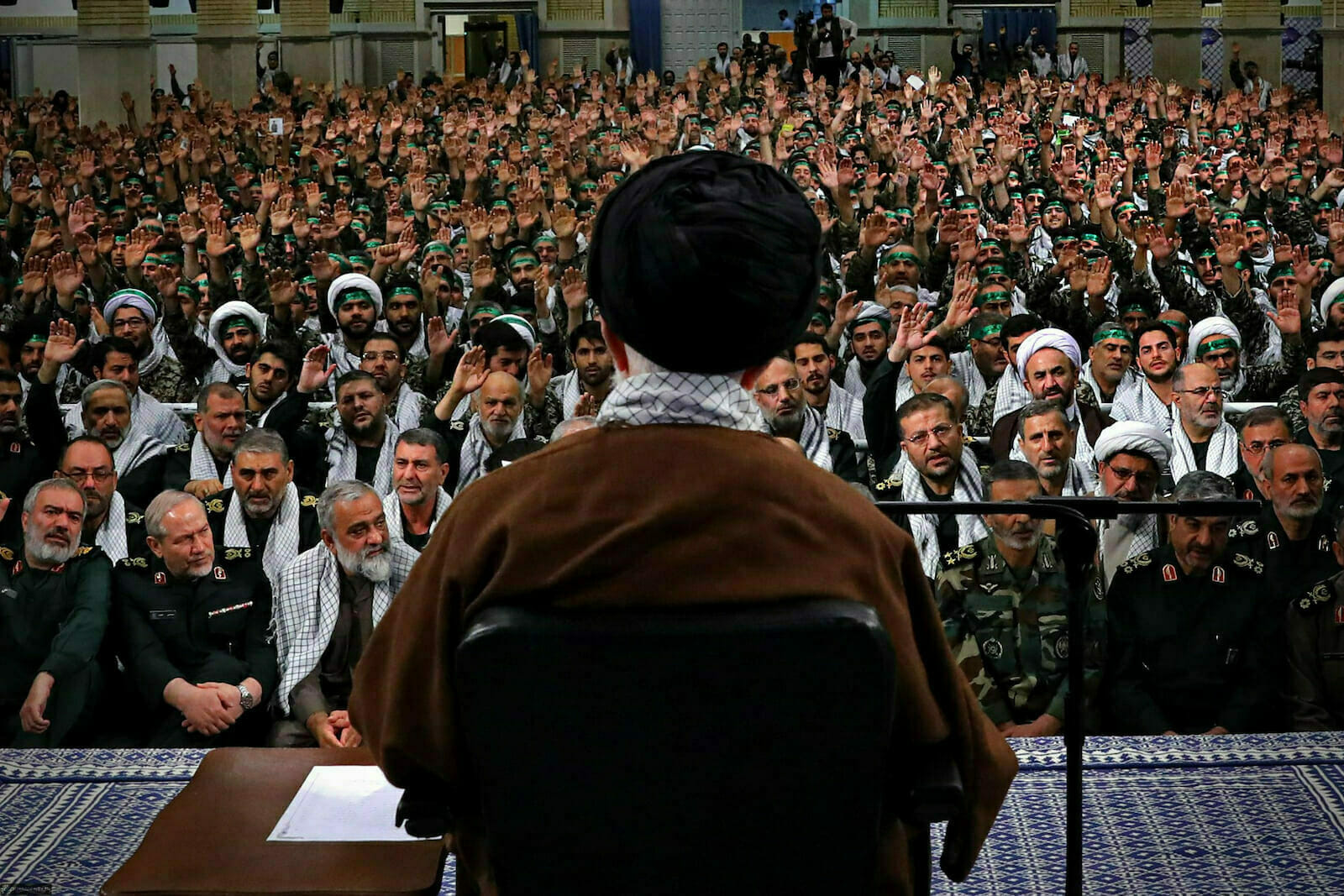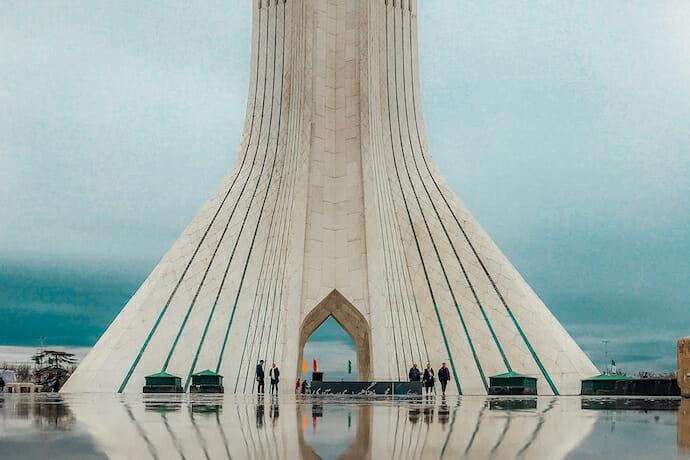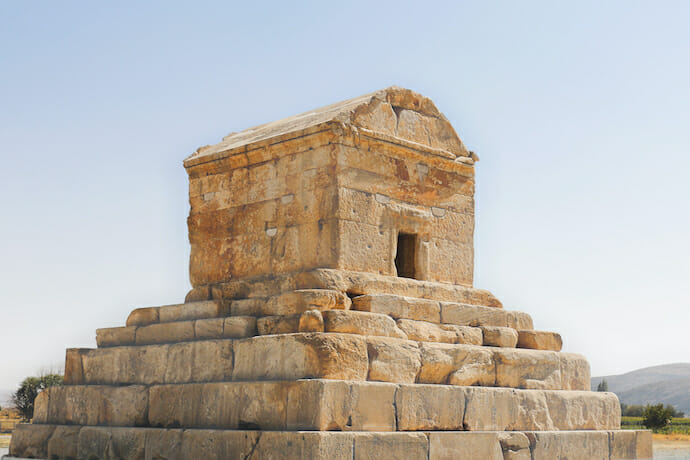
Iran’s Obsession with its Imperial Past and Israel
Iran and Israel, at their closest points, are about 600 miles apart. Israel’s support for Mohammad Reza Pahlavi, and Israel’s training and aid to the SAVAK, the Shah’s secret police, did much to occasion popular hatred for Israel. The perceived association of Israel with the oppression by the Shah’s regime was so great that it engendered the popular belief that Israeli soldiers were responsible for the massacre of Black Friday on 8 September 1978, in Tehran’s Jaleh Square.
By 1980, after Iraq had attacked Iran, Iran and Israel were brought together in a tacit eight-year alliance due to their mutual hostility toward Iraq. Dalia Dassa Kaye, Alireza Nader, and Parisa Robinson, in Israel and Iran: A Dangerous Rivalry, have viewed the deterioration of relations to the present level in three stages: the end of the Iran-Iraq War in 1988, the defeat of Iraq, and the fall of Saddam Hussein in 2003, and the 2006 Lebanese War, also known as the 2006 Israel-Hezbollah War, in which Hezbollah fought as a proxy of Iran.
Nevertheless, the Islamic Republic of Iran has stated continually its goal to eliminate the State of Israel. At the end of 2020, in response to a July directive from the Supreme Leader of Iran, Ayatollah Ali Hosseini Khamenei, a bill was introduced in Iran’s parliament to direct the government to destroy Israel by 2041. The Khamenei directive had been prompted by the assassination of General Qassem Soleimani, by an American drone strike ordered by U.S. President Donald Trump in January of 2020. Iran’s goal, in spite of the detriment that it has cost average Iranians, is driven by the obsession to revive Persian imperial aims using the available resources of today’s Middle East, to this end, to place Jews within the strictures of a traditionally organized Muslim society.
The Persians are the only people of the Middle East with imperial and intellectual traditions from the periods both Before the Common Era (BCE) and the Common Era (CE). The rule of the Median, the Achaemenian, the Parthian, and the Sassanian empires endured over one thousand years. At its acme in the fifth century BCE, the Achaemenian Empire extended into North Africa and Europe. The Parthians and Sassanians rose after the Alexandrian conquest in the fourth century BCE and resisted successfully Rome, then later, Constantinople. After the Arab conquest, until the rule of the Safavids at the beginning of the 1500s, the Persians were under many foreign rulers: the Arabs, the Ghaznavids, the Seljuks, the Mongols, and the Timurids, with the exception of the Persian Intermezzo (861-1090). Nevertheless, Persian culture never succumbed. Its respected and valued tradition and its literature made Persian a language of administration and high culture of its conquerors. This period, one of the greatest flowerings of Persian poetry, includes Ferdowsi, Musharif ibn Muslih Saadi, Shams al-Din Muhammed Hafez, and Omar Khayyam, the last writer well known to foreign readers for the Rubaiyat. Persian gained status even in regions that were not under Persian rule, such as India and Ottoman Turkey.

The Safavids, a group of initially Turkic rulers, adopted Persian and unified their rulemaking Twelver Shiite Islam the religion of the state. The adoption of Twelver Shiite Islam cannot be overestimated as an agent for unity in an ethnically and linguistically diverse state where to this day, at most, only 65% of the population is Persian. The Safavids were the only Middle Eastern polity to stop Ottoman expansion; the border that they established remains close to Iran’s western borders today with Iraq and Turkey.
Today, it is through Twelver Shiite communities and other Shiite communities in Bahrain, Iraq, Lebanon, Yemen, and the ruling Alawite Shiite faction in Syria, that Iran is able to gain influence. These communities are far spread; only one, Iraq, borders Iran. Iran’s rival Saudi Arabia borders Bahrain in the east and Yemen in the southwest, where it is fighting the Iranian-supported Houthis. As for Iraq, Lebanon, and Syria, Iran seeks to secure an arc all the way to Israel’s northern border. Over the centuries, Persia had ruled for long periods the expanse of the Fertile Crescent. Control of this expanse has ceased not to be a strategic imperative, as Iraq, Lebanon, and Syria lack the adequate state institutions to govern much of their respective territories. Consequently, Iran is an important player in the internal military conflicts of all three countries. For this purpose, Iran uses not its regular armed forces, but the Quds Force, whose commander reports directly to the supreme leader of Iran. Iran’s proxy Hezbollah has been fighting in Lebanon since 2005.
Hezbollah fights for Iranian interests in Syria, the defense of the Alawite Shiite-dominated government of Bashar al-Assad. Iran’s ties to Syria go back to the war with Iraq when Syria was an ally against Iraq, Syria’s traditional rival in the Ba’ath movement. Iran uses Hezbollah, in spite of the high loss of Lebanese lives and economic infrastructure, to attack Israel to provoke Israeli incursions as a catalyst for rallying the support of Arabs and Muslims, especially from Sunni constituencies. Likewise, Iran has sent Hezbollah to plan and to carry out attacks on Diaspora Jews and Israeli Jews in the Caucuses, Europe, Southeast Asia, Sub-Sahara Africa, and Argentina, where Hezbollah bombed the Israeli embassy killing 22 people and wounding 242 in 1992 and a Hezbollah planted bomb killed 85 people and wounding over 300 in 1994. The Iranian government’s quest for empire meets its animus toward Jews and Israel, as it projects itself far beyond its frontiers.
Jews have lived in Iran, in all likelihood, for 28 centuries. Iran’s view of the role of Jews is conditioned by its stated imperative to maintain an Islamic republic where Jews are ruled not as individual citizens, but as a class of people subject to Muslim dominance. Historically, the status of Jews has been proportionate to their usefulness for the particular rulers. With the exception of amelioration of the position of Jews during the Pahlavi period, 1925-1979, traditionally, Jews had been subjected to public debasement, attacks, and murder, and had little recourse to protection from the law. Today, denial of the Jewish Holocaust is a policy of the Iranian government, and Iran has sponsored and hosted international Holocaust denial events. As Jews are valued by the utility that they may have for the government, Israel is viewed through the same lens.

Since the present regime came to power in 1979, Iran has viewed as antithetical to the maintenance of Muslim communal norms the rule of a Jewish state in the heart of Dar al-Islam, the area of the world traditionally under Muslim rule. Consequently, the Islamic Republic of Iran dubbed Israel the “Little Satan,” having reserved the title of the “Great Satan” for the United States. In 1979, Iran broke diplomatic relations with Israel and committed itself to Israel’s destruction. The aforementioned Ayatollah Khamenei has declared “This cancerous tumor (Israel) must be eliminated from the region.” Nevertheless, Iran maintained secret ties to Israel, as Israel served as a conduit for weapons and on-site expertise during the war with Iraq, an arrangement that benefitted both countries. Iran’s prior air attacks on Iraq aided Israel’s destruction of Iraq’s Osirak nuclear reactor on 6 June 1981. Nevertheless, Iran was building its ties to Hezbollah. Iran’s slogan of “The road to Jerusalem passes through Karbala” made clear that Iran’s war effort went far beyond its defense against Iraqi territorial aggression. Karbala, which is 60 miles southwest of Baghdad, houses the tomb of Husayn ibn Ali, a most venerated figure in Shiite Islam, appealed to a Shiite audience and Jerusalem to a pan-Muslim audience.
Iran forged relations with Hamas soon after it was created in 1987. Hamas was and has remained unwavering in its commitment to Israel’s destruction. Any negotiations that it may have pursued with Israel have been that of an ad hoc nature to relieve domestic pressures in Gaza that Hamas has been unable to resolve. At most, Hamas has proposed a hudna, which may be translated as a “truce,” to attain a respite to regroup and to rearm for future combat. To control and to receive credit for the support of Hamas’ initiatives and possible breakthroughs, Iran must outmaneuver Qatar and Turkey, the latter, Iran’s traditional rival, which under President Recep Tayyip Erdogan has pursued an ostensible policy to gain dominance over Sunni-led communities in the former Ottoman Eastern Mediterranean. The Syrian Civil War has tested Iran’s relations with Hamas. From 2012 until 2017, a rift developed between Iran and Hamas, when Hamas’ need to adhere to Sunni solidarity caused it to send combatants to Syria to aid the insurgents. This rift was mended due to its need for military aid from Iran. Through involvement far beyond its borders, Iran has made purposely its pursuit of empire in the Middle East a matter of world concern.
Iran’s nuclear weapons policy has made the entire world prioritize it as a greater problem than Iran’s empire-building via the Quds Force. Thus, Iran has gained a bargaining chip to counteract diplomatic and military moves against its proxies and its own forces. Iran acts not to realize immediate gains but takes a long-term approach either in bargaining within the Middle East or with world powers. In spite of trade embargoes and boycotts, the government diverts resources from social needs and from the maintenance of infrastructure to support its proxies and its nuclear weapons program. Thomas Friedman, a New York Times opinion columnist, on 3 January 2020, called the recently assassinated Qassim Soleimani, commander of the Quds Force, “the most overrated warrior.” Soleimani’s building and expansion of the Quds Force throughout the Middle East had occasioned great hardships on Iranian citizens. The Iranian government, seeing patience, survival, and cultural memory as indelible parts of Persian identity, will continue to pursue the chimera of the empire-building.
Ferdowsi’s Shahnameh: The Persian Book of Kings is a historical epic of over 50,000 couplets that chronicles and celebrates Persia’s exceptionalism and its empires from their beginnings until the conquest of Persia by the Arabs. The work was composed over three hundred years later, between 997 and 1010, during the Iranian intermezzo in the eighth-century period of foreign rule. To this day, Shahnameh remains one of the most celebrated and venerated works of Persian literature. Iran is well aware of its imperial past. The government knows that were it to destroy Israel through Arab proxies, it might claim a perceived glory that the Arabs, a longtime traditional rival of the Persians, have failed to achieve for over 70 years.
